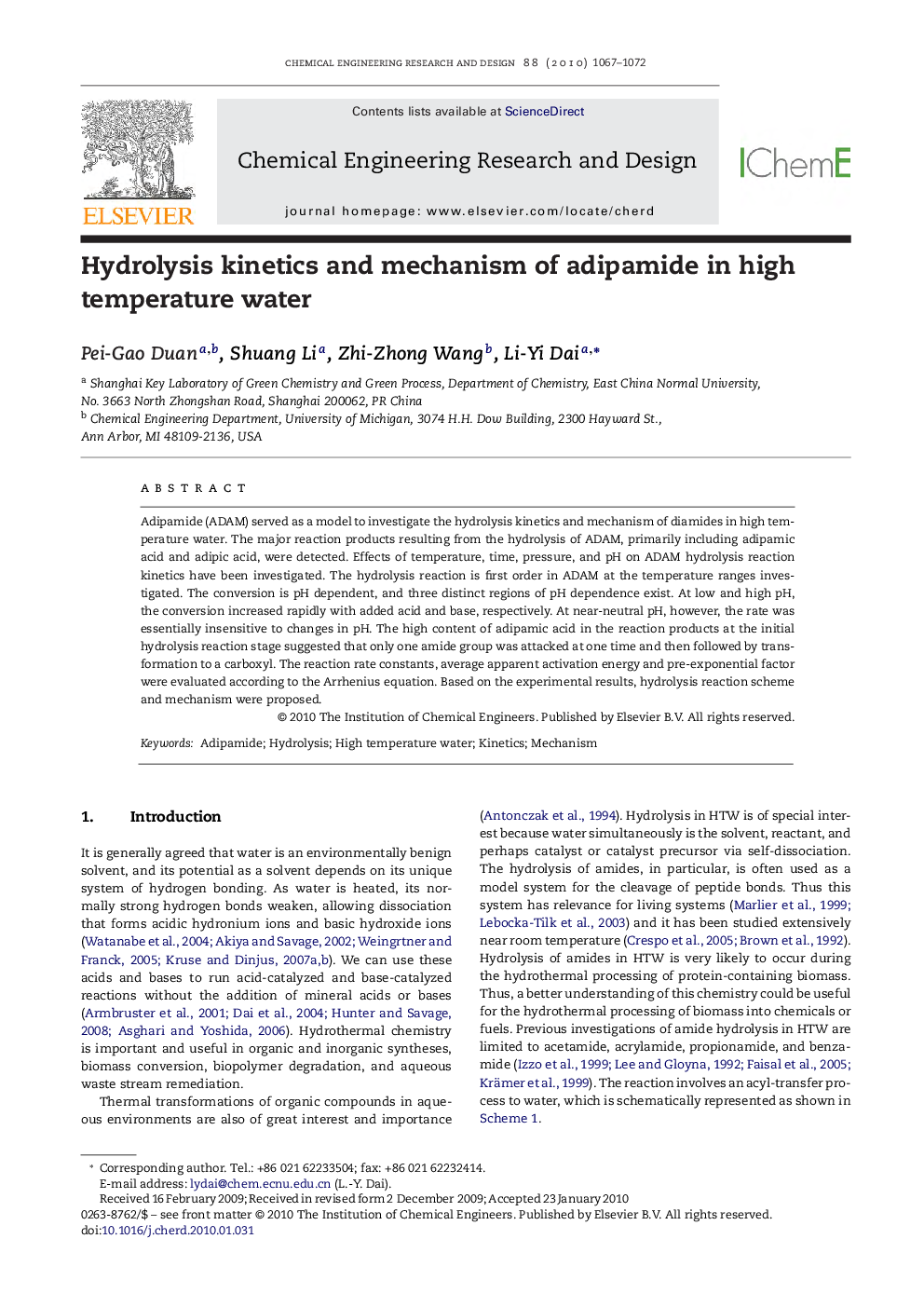| Article ID | Journal | Published Year | Pages | File Type |
|---|---|---|---|---|
| 622227 | Chemical Engineering Research and Design | 2010 | 6 Pages |
Adipamide (ADAM) served as a model to investigate the hydrolysis kinetics and mechanism of diamides in high temperature water. The major reaction products resulting from the hydrolysis of ADAM, primarily including adipamic acid and adipic acid, were detected. Effects of temperature, time, pressure, and pH on ADAM hydrolysis reaction kinetics have been investigated. The hydrolysis reaction is first order in ADAM at the temperature ranges investigated. The conversion is pH dependent, and three distinct regions of pH dependence exist. At low and high pH, the conversion increased rapidly with added acid and base, respectively. At near-neutral pH, however, the rate was essentially insensitive to changes in pH. The high content of adipamic acid in the reaction products at the initial hydrolysis reaction stage suggested that only one amide group was attacked at one time and then followed by transformation to a carboxyl. The reaction rate constants, average apparent activation energy and pre-exponential factor were evaluated according to the Arrhenius equation. Based on the experimental results, hydrolysis reaction scheme and mechanism were proposed.
